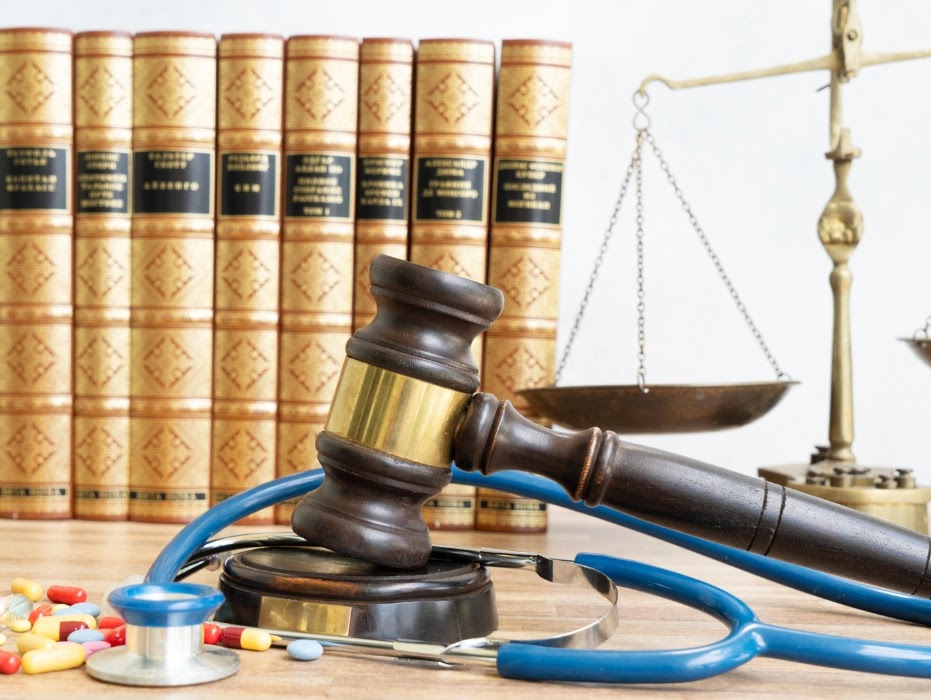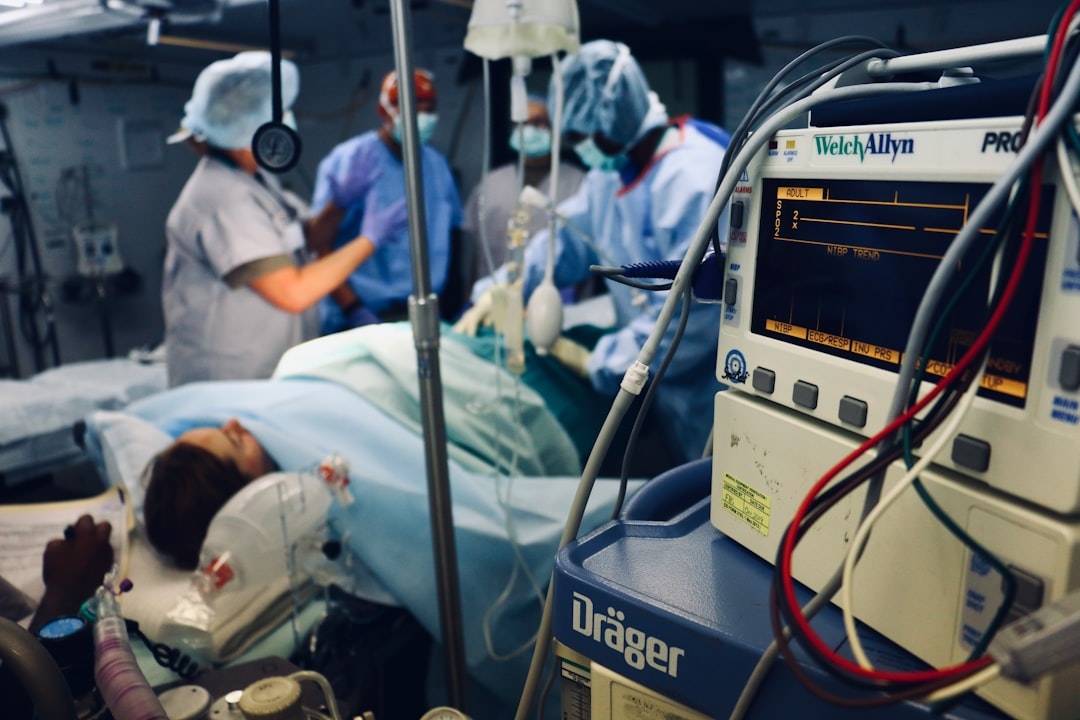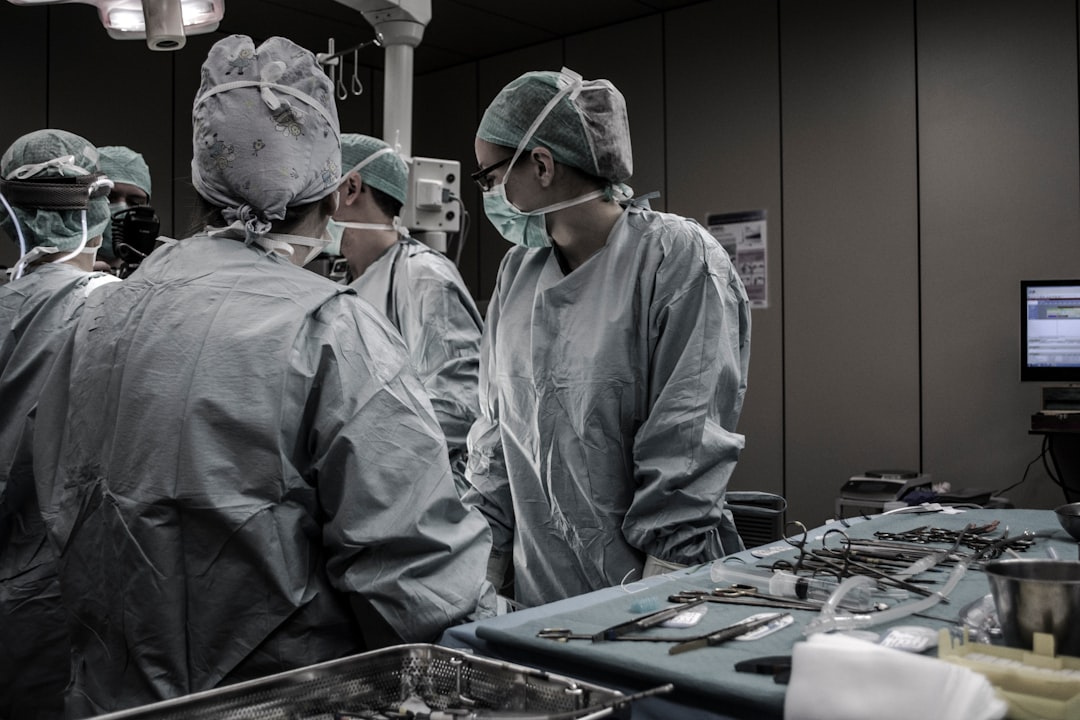Common Causes of Misdiagnosis in Healthcare
Misdiagnosis in healthcare is a critical issue that can have far-reaching consequences for patients, families, and the medical community. Understanding the common causes of misdiagnosis is essential in addressing this complex problem and improving patient outcomes. Several factors contribute to the prevalence of misdiagnoses, ranging from cognitive biases to systemic issues within healthcare institutions.
One primary cause of misdiagnosis is cognitive bias on the part of healthcare professionals. Physicians and other medical practitioners are not immune to human error, and cognitive biases can cloud their judgment. For instance, confirmation bias may lead a doctor to favor information that supports an initial diagnosis while disregarding evidence to the contrary. Similarly, availability bias might cause a physician to diagnose a condition more readily if it has been recently encountered or publicized, regardless of its actual probability.
Another significant contributor is inadequate communication among healthcare providers. The modern medical landscape often involves multiple specialists working together on patient care. When there is poor communication between these specialists, crucial information can be overlooked or misunderstood, leading to incorrect or delayed diagnoses. Additionally, time constraints in busy clinical settings may limit opportunities for thorough discussions regarding patient symptoms and history.
Systemic issues within healthcare organizations also play a role in misdiagnoses. Over-reliance on technology without adequate human oversight can lead to errors; for example, diagnostic tools like imaging scans or laboratory tests are not infallible and should be interpreted with caution by experienced clinicians. Furthermore, understaffing and high patient-to-doctor ratios can result in rushed consultations where details are missed.
Moreover, variability in access to care contributes significantly to this issue. Patients from marginalized communities may experience disparities in quality of care due to socioeconomic factors or implicit biases within the system itself. These inequities can lead to less accurate assessments and insufficient follow-up care, further exacerbating the risk of misdiagnosis.
Educational gaps among healthcare professionals also pose challenges. Continuous education and training are vital for keeping up with advancements in medical knowledge and practices; however, not all practitioners have equal access to ongoing learning opportunities. This disparity can result in outdated practices being applied during diagnosis processes.
Addressing these causes requires a multifaceted approach involving policy changes at institutional levels as well as individual efforts by healthcare providers towards self-awareness about biases affecting their decision-making processes. Encouraging open communication channels between multidisciplinary teams will foster better collaboration leading ultimately towards more accurate diagnostics outcomes while minimizing chances for errors due largely upon preventable factors such as those discussed above.
In conclusion, tackling common causes behind misdiagnoses demands coordinated efforts across various dimensions: enhancing education initiatives amongst practitioners themselves alongside infrastructural improvements aimed specifically designed around facilitating effective communications networks spanning entire spectrums concerning patient-care delivery systems alike-all geared toward ensuring safer environments yielding better health results overall throughout societies globally speaking today!
Impact of Misdiagnosis on Patient Health
Misdiagnosis is a critical issue in the medical field, with profound implications for patient health. When a patient is misdiagnosed, the consequences can range from minor to life-threatening. The impact of such errors not only affects the physical well-being of patients but also their emotional and psychological states.
Firstly, a misdiagnosis can lead to inappropriate treatment, which may cause direct harm to the patient. For instance, if an illness is wrongly identified as another condition, the prescribed medications or interventions might exacerbate the true underlying disease. This can result in unnecessary side effects or complications that could have been avoided with correct diagnosis and treatment. In some cases, crucial time is lost as patients undergo ineffective treatments while their actual condition goes untreated and potentially worsens.
Beyond physical health effects, the psychological impact of misdiagnosis should not be underestimated. Patients often experience anxiety and stress when they realize they have been receiving incorrect treatment. This emotional turmoil can be compounded by feelings of mistrust towards healthcare providers and skepticism about future medical advice. Patients may also suffer from diminished quality of life due to prolonged symptoms or side effects from incorrect treatments.
Furthermore, there are significant implications for healthcare systems at large. Misdiagnosis can lead to increased healthcare costs due to additional tests, treatments, or hospitalizations required to correct initial errors. This places an undue financial burden on both patients and healthcare facilities.
The ripple effect of misdiagnosis extends even further when considering public health outcomes. Misdiagnoses can contribute to inaccurate data on disease prevalence and effectiveness of treatments, which in turn impacts research efforts and public health policy-making.
Addressing this issue requires robust improvements in diagnostic practices. Enhanced training for healthcare professionals, better access to diagnostic tools and technology, as well as fostering open communication between patients and providers are essential steps towards minimizing diagnostic errors.
In conclusion, the impact of misdiagnosis on patient health is multidimensional-affecting physical wellbeing, emotional stability, financial resources, and trust in the healthcare system. It underscores the need for vigilance in diagnosis processes to safeguard against these detrimental consequences for individuals and society as a whole.
Case Studies Highlighting Misdiagnosis Examples
Misdiagnosis, a significant issue within the realm of healthcare, serves as a sobering reminder of the fallibility inherent in medical practice. Case studies highlighting misdiagnosis provide crucial insights into the complexities and challenges faced by clinicians, underscoring the need for continuous improvement in diagnostic procedures. By examining these examples, we gain a deeper understanding of how missteps occur and what steps can be taken to prevent them.
One illustrative case involves a young woman who presented with persistent headaches and fatigue. Initially diagnosed with migraines, her condition worsened despite treatment. It was only after several months that further investigation revealed she had a rare form of brain cancer. This tragic delay highlights how common symptoms can lead to assumptions based on more prevalent conditions rather than prompting thorough investigations.
Another poignant example is that of an elderly man diagnosed with Alzheimer's disease following his presentation of memory loss and confusion. As his symptoms progressed atypically, it became evident that he suffered from normal pressure hydrocephalus-a condition treatable with surgical intervention. This case underscores the importance of considering alternative diagnoses when patients exhibit unusual symptom progression or response to treatment.
Pediatric cases also offer valuable lessons in misdiagnosis. A child exhibiting wheezing and difficulty breathing was treated for asthma over several years without improvement. Eventually, it was discovered that he had inhaled a small foreign object obstructing his airway-an oversight due to confirmation bias where initial diagnoses are not revisited despite lack of expected therapeutic outcomes.
These case studies highlight several critical factors contributing to misdiagnosis: cognitive biases such as anchoring on initial impressions, lack of consideration for atypical presentations, and insufficient follow-up investigations when standard treatments fail. They emphasize the necessity for healthcare professionals to maintain an open mind and adopt a holistic approach when assessing patient symptoms.
The implications extend beyond individual health outcomes; they represent broader systemic issues within healthcare systems worldwide. Improving diagnostic accuracy requires investment in better training for medical professionals, encouraging interdisciplinary collaboration, and integrating advanced technologies like AI-assisted diagnostics into regular practice.
In conclusion, while human error is an inevitable part of medicine's practice, learning from past mistakes through detailed case studies allows us to pave pathways toward reducing their occurrence. By fostering environments where questioning initial diagnoses is encouraged and ensuring robust support systems for reevaluation exist, we can make strides toward minimizing future instances of misdiagnosis-ultimately improving patient care outcomes on a global scale.
Strategies for Reducing Misdiagnosis Rates
Misdiagnosis is a significant concern in the medical field, posing serious risks to patient safety and leading to unnecessary treatments, increased healthcare costs, and diminished trust in healthcare systems. The complexity of human health, combined with the limitations of current diagnostic tools and processes, makes it challenging to achieve accurate diagnoses consistently. However, several strategies can be employed to reduce misdiagnosis rates effectively.
One fundamental approach is enhancing communication within healthcare teams and between doctors and patients. Miscommunication is often at the root of diagnostic errors, as critical information may be overlooked or misunderstood. Implementing structured communication protocols such as SBAR (Situation-Background-Assessment-Recommendation) can help ensure that all relevant data is shared clearly and concisely among team members. Moreover, encouraging open dialogue with patients about their symptoms and medical history can lead to a more comprehensive understanding of potential diagnoses.
Another strategy involves investing in continuous education and training for healthcare professionals. Medicine is an ever-evolving field; staying abreast of the latest research findings and diagnostic techniques is crucial for accurate diagnosis. Regular workshops, seminars, and simulation exercises can help clinicians hone their diagnostic skills and keep up-to-date with emerging diseases or atypical presentations of common conditions.
Technology also plays a pivotal role in reducing misdiagnosis rates. The integration of decision support systems (DSS) into clinical practice aids physicians by providing evidence-based recommendations during the diagnostic process. These systems analyze patient data against vast databases of medical knowledge, flagging potential diagnoses that might not be immediately apparent. Furthermore, advancements in artificial intelligence (AI) have shown promise in identifying patterns that could lead to more precise diagnoses while minimizing human error.
Standardizing diagnostic procedures through guidelines can also mitigate variation in how different practitioners interpret symptoms or test results. Clinical guidelines developed by professional bodies offer valuable frameworks for diagnosing specific conditions based on best practices derived from robust evidence.
Additionally, fostering a culture that encourages second opinions can significantly reduce instances of misdiagnosis. When faced with uncertain cases or rare conditions, consulting with specialists or colleagues provides additional perspectives that might confirm or challenge initial assessments.
Finally, improving access to comprehensive patient records through integrated electronic health record (EHR) systems ensures physicians have complete information available when making diagnostic decisions. Access to longitudinal data enables better understanding of a patient's health trajectory over time rather than relying solely on isolated snapshots during office visits.
In conclusion, while misdiagnosis remains a pressing issue within healthcare systems worldwide due to its multifaceted nature involving human factors as well as systemic challenges - employing targeted strategies focused on better communication practices; continuous professional development; leveraging technology solutions like DSS & AI; implementing standardized protocols; promoting collaborative environments encouraging second opinions along with ensuring seamless accessibility via advanced EHRs are essential steps towards minimizing this problem thereby ultimately improving patient outcomes significantly across diverse settings globally today!
The Role of Technology and AI in Preventing Misdiagnosis
Misdiagnosis is a critical issue in the healthcare industry, often leading to inappropriate treatment, prolonged illness, or even fatal consequences. As medical practitioners strive to minimize errors, technology and artificial intelligence (AI) have emerged as pivotal tools in transforming diagnostic processes and reducing the chances of misdiagnosis. This essay explores how these technological advancements are playing an instrumental role in enhancing diagnostic accuracy and patient outcomes.
Traditionally, diagnosis has relied heavily on the expertise and experience of physicians. While their skills are invaluable, human error remains an inherent risk due to factors like fatigue, cognitive biases, or simply the overwhelming amount of information they must process. This is where technology steps in, providing support systems that enhance decision-making capabilities. Electronic Health Records (EHRs), for example, serve as comprehensive repositories of patient information that can be accessed quickly by healthcare providers. By streamlining data collection and retrieval processes, EHRs reduce errors stemming from incomplete or inaccurate patient histories.
Furthermore, AI-powered diagnostic tools have shown remarkable potential in aiding clinicians with complex cases. Machine learning algorithms can analyze vast datasets far beyond human capacity, identifying patterns that might be overlooked by even seasoned professionals. For instance, AI systems have been developed to read medical images such as X-rays and MRIs with accuracy comparable to radiologists. These systems can detect anomalies at early stages which might not be visible to the naked eye or could be easily missed during manual examinations.
Natural language processing (NLP) is another facet of AI contributing towards minimizing misdiagnosis. By analyzing clinical notes and other text-based data within EHRs, NLP algorithms can flag inconsistencies or suggest alternative diagnoses based on similar previous cases recorded across various databases worldwide. This enables a more comprehensive evaluative approach where multiple diagnosis possibilities are considered before reaching a conclusion.
Moreover, AI facilitates personalized medicine by integrating genetic information into diagnosis protocols. Precision medicine initiatives utilize AI algorithms to tailor treatments based on individual genetic profiles rather than relying solely on generalized practices which may not suit every patient equally well. Such precision reduces trial-and-error methodologies associated with traditional diagnostics and enhances treatment efficacy while lowering risks associated with incorrect prescriptions.
Despite these promising developments, it is crucial to acknowledge limitations associated with technology usage in healthcare settings too; there exists a dependency risk wherein over-reliance might inadvertently lead clinicians away from critical thinking if unchecked autonomy is given entirely over automated systems without necessary oversight mechanisms embedded therein ensuring quality control measures remain intact throughout diagnostic processes employed via technologically driven aids available today globally within hospitals/clinics alike irrespective geographical boundaries encountered between them operationally speaking contextually here now currently ongoing worldwide amidst current era's digital revolution underway everywhere ubiquitously affecting all industries including but not limited exclusively just only healthcare sector alone specifically targeted herein discussed hereinabove accordingly duly noted recognized appreciated fully comprehensively altogether conclusively finally thus stated concluded ultimately eventually hereafter henceforth forevermore indeed truly sincerely genuinely honestly accurately factually truthfully verifiably authentically realistically practically effectively efficiently productively beneficially advantageously positively constructively affirmatively successfully satisfactorily optimally ideally perfectly exactly rightly correctly precisely suitably fittingly appropriately properly consistently reliably dependably steadfastly unwaveringly resolutely firmly confidently certainly undoubtedly unquestionably incontrovertibly indubitably irrefutably indisputably undeniably unarguably unmistakably clearly plainly evidently manifestly patently obviously transparently conspicuously prominently markedly strikingly distinctly discernibly noticeably perceptibly substantially significantly meaningfully impactfully influentially powerfully dynamically energetically robustly vigorously potently forcefully emphatically assertively authoritatively commandingly
Legal and Ethical Considerations in Misdiagnosis Cases
Misdiagnosis cases present a complex intersection of medicine, ethics, and law, demanding careful navigation to uphold the integrity of the healthcare system while ensuring justice for affected patients. At the heart of these cases are legal and ethical considerations that must be meticulously balanced to address both the consequences of diagnostic errors and the broader implications for medical practice.
Legally, misdiagnosis can lead to malpractice claims if it is demonstrated that a healthcare provider failed to meet the standard of care expected in their field. This standard is typically defined as what a reasonably competent professional would do under similar circumstances. When a patient's condition worsens due to misdiagnosis, they may seek compensation for damages incurred, such as additional medical expenses, lost wages, or pain and suffering. These legal proceedings necessitate thorough investigation and often hinge on expert testimony to establish whether negligence occurred.
On an ethical level, misdiagnosis raises significant concerns about patient trust and autonomy. Healthcare providers have an ethical obligation to deliver accurate diagnoses because patients rely on this information to make informed decisions about their treatment options. A misdiagnosis not only jeopardizes physical health but also undermines the trust essential in doctor-patient relationships. Ethical practice demands transparency; thus, when errors occur, practitioners should be forthcoming with patients and engage in honest discussions about what went wrong and how future issues could be avoided.
Moreover, there is an ethical imperative for continuous improvement within healthcare systems. Institutions must foster environments where clinicians feel comfortable reporting errors without fear of retribution. This approach encourages learning from mistakes rather than concealing them, ultimately enhancing patient safety.
However, balancing these legal and ethical dimensions is fraught with challenges. Fear of litigation might deter open communication between practitioners and patients or inhibit reporting errors internally within hospitals or clinics. Conversely, overly robust protections against lawsuits could lead to complacency regarding diagnostic accuracy among practitioners.
The resolution lies in developing policies that strike a balance-protecting patients' rights while supporting medical professionals in improving their diagnostic processes. Implementing comprehensive training programs focused on diagnostic skills development can reduce instances of misdiagnosis over time. Additionally, adopting advanced technologies like AI-driven diagnostic tools can assist clinicians by providing data-driven insights that support more accurate decision-making.
In conclusion, navigating the landscape of misdiagnosis cases requires addressing both legal liabilities and ethical responsibilities comprehensively. By fostering a culture that prioritizes patient welfare through transparency and ongoing education while providing fair mechanisms for accountability when errors occur, healthcare systems can mitigate the adverse effects associated with misdiagnoses while maintaining public trust and upholding high standards of care.





